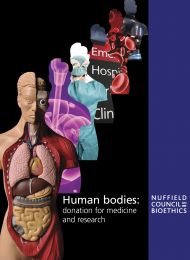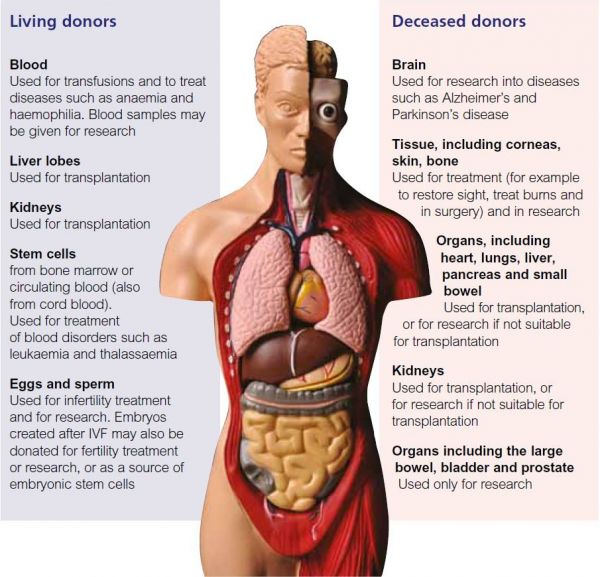Human bodies: donation for medicine and research
Report
Published 10/10/2011

Many different forms of human bodily material may be donated for the treatment of others, or for research that aims to improve medical treatment in future. Bodily material may be donated after death, during life, or both depending on the type of donation.
The diagram below shows the different types of bodily material that can be donated.
After death, the whole body may be donated for medical education and training. The whole body may also be ‘loaned’ for medical purposes during life – for example in testing a new medicine as a healthy volunteer.
The recipient of the material may be an individual patient, such as someone in need of a kidney transplant, or a couple who cannot conceive with their own eggs or sperm. Alternatively it may be a researcher or a research organisation, using donated tissue to research new ways of treating diseases such as cancer.
Many different health professionals and a whole range of processes are involved in making donation possible. These include doctors, nurses, technical staff, researchers, and specialist facilities for screening, testing, storing and transporting donated material.


Share